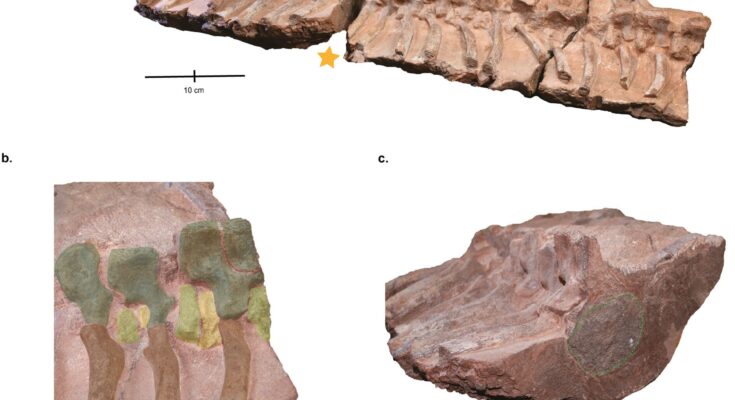Researchers in Namibia have discovered a giant ancient creature that lived 280 million years ago, long before the dinosaurs. This salamander-like predator was one of the top hunters of its time.
The creature, named Gaiasia jennyae, measured about 2.5 meters long. It had a huge head shaped like a toilet seat and sharp, interlocking teeth. It hid in cold, swampy waters and lakes, waiting with its mouth open to catch any prey that came too close.
Professor Claudia Marsicano from the University of Buenos Aires shared her amazement at finding the large fossil. “When we found this enormous specimen just lying on the outcrop as a giant concretion, it was really shocking,” she said. “I knew just from seeing it that it was something completely different. We were all very excited.”
Gaiasia might be the largest land predator of the time period
Gaiasia was likely the top predator in its ecosystem and one of the largest land hunters of its era.
Jason Pardo from the Field Museum in Chicago, who co-authored a paper on the fossils, described the creature. He said it had a large, flat head shaped like a toilet seat, which helped it open its mouth and suck in prey.
A giant creature with a "toilet seat-shaped" head and huge fangs was a top predator 40 million years before the first dinosaurs evolved, new research reveals. The skull alone of Gaiasia jennyae was over 2ft long, say scientists.
pic.twitter.com/kk5ouQCNNy
— Sumner (@renmusb1) July 3, 2024
The front of its mouth is filled with huge fangs. It was a large predator, but it might have also been a slow ambush hunter.
The fossil was named after the Gai-As Formation in Namibia, where it was unearthed. It also honors Jenny Clack, a paleontologist known for her expertise in early tetrapod evolution. Tetrapods were the ancestors of amphibians, reptiles, birds, and mammals.
Researchers uncovered at least four incomplete fossil specimens, including skull fragments and an almost whole backbone. Gaiasia had a skull approximately 24 inches (60 centimeters) long, and its jaw structure suggests it could deliver a powerful bite capable of capturing large prey, as reported by The Guardian.
Significance of discovery site in ancient tropical wetlands
The discovery site holds particular importance because, until now, most knowledge about the early evolution of land animals came from fossils found in ancient tropical wetlands in Europe and North America.
During the creature’s era, present-day Namibia was situated much farther south, nearly aligned with the northernmost part of Antarctica, as part of the vast southern supercontinent known as Gondwana.
While areas near the equator were drying up and transforming into forests, regions closer to the poles retained swamps, possibly alongside ice patches and glaciers, as reported by The Guardian.
Moreover, the recent discovery reveals that even in harsh climates, large predators thrived in these icy swamps. The fossils resemble more ancient vertebrates, contrasting with animals in warmer, drier regions which were evolving into new forms that would eventually give rise to mammals, reptiles, and amphibians.



